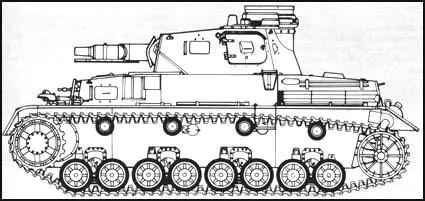Panzer Tanks
The German military strategy of using of fast-moving tanks, with motorized infantry and artillery supported by dive-bombers, and concentrating on one part of the enemy sector, became known as Blitzkreig (lightning war). The strategy was first put forward by Colonel John Fuller, the chief of staff of the British Tank Corps. Fuller was disappointed with the way tanks were used during the First World War and afterwards produced Plan 1919. This included a call for long-range mass tank attacks with strong air, motorized and artillery support. These ideas were developed in more detail in his books, Reformation of War (1923) and Foundation of the Science of War (1926).
Fuller's ideas were ignored by the British Army but was studied in Germany and in 1926 leaders of the the German Army asked the government to commission the production of new tanks that would enable them to use Blitzkreig tactics in any future conflicts.

As a result of the terms of the Versailles Peace Treaty these new experimental tanks were called tractors. The Light Tractor weighed ten tons and carried a 37mm gun and the Heavy Tractor was a 20-tonner with two turrets, one forward with a 77mm gun, and one at the rear carrying a machine-gun.
After Adolf Hitler obtained power in 1933, the German government was open about its tank production. In the spring of 1934 the German Army began using the Panzer I tank. The following year the Panzer II appeared. Carrying a three man crew, the tank weighed 7.2 tons and had a 20mm cannon and a machine-gun in the turret. Powered by a 130hp engine it could reach 25mph on a good surface. The tank continued to be modified and by 1937, when it went into mass production, it weighed 9.5 tons and the engine was uprated to 140hp.
The Panzer III also appeared in 1937. Built by Daimler-Benz it had a 230hp motor and carried a five man crew. It weighed 15 tons and was armed with a 37mm gun. The third tank to be introduced in 1937 was the Panzer IV. This was to eventually become the backbone of the Panzer force and more of this type was built than any other. Produced by Krupp it weighed 17.3 tons and was armed with a short 75mm gun in the turret, plus two machine guns, and a crew of five men. The armour protection ranged from 8mm to 30mm in thickness. The 230hp engine gave it a speed of 18mph.
During the invasion of Poland in September, 1939, it became clear that the Panzer I was insufficiently armed for battle conditions. Panzer II and Panzer III tanks were reliable but were outgunned. The outstanding performer was the Panzer IV as it had the perfect combination of speed, agility, firepower and reliability. Over the next few years Germany produced over 9,000 of these tanks.
The Panzer IV performed so well during the invasions of Poland and France that little tank development took place during the next year. However, the problems encountered during Operation Barbarossa resulted in the production of the Panther and it eventually became Germany's most important tank.
| Tank | Produced |
|---|---|
| Panzer I | 3000 |
| Panzer II | 3500 |
| Panzer III | 5644 |
| Panzer IV | 9000 |
| Panther | 4814 |
| Tiger | 1350 |
| King Tiger | 484 |
Primary Sources
(1) Hasso Manteuffel, commander of the 7th Panzer Division, was interviewed by Basil Liddell Hart, after the war for his book The Other Side of the Hill (1948)
T anks must be fast. That, I would say, is the most important lesson of the war in regard to tank design. The Panther was on the right lines, as a prototype. We used to call the Tiger a 'furniture van' - though it was a good machine in the initial breakthrough. Its slowness was a worse handicap in Russia than in France, because the distances were greater.
The Stalin tank is the heaviest in the world; it has robust tracks and good armour. A further advantage is its low build - it is 51 cm lower than our Panzer V, the Panther. As a 'breakthrough' tank it is undoubtedly good, but too slow.
It was at Targul Frumos that I first met the Stalin tanks. It was a shock to find that, although my Tigers began to hit them at a range of 3,000 metres, our shells bounced off, and did not penetrate them until we had closed to half that distance. But I was able to counter the Russians' superiority by manoeuvre and mobility, in making the best use of ground cover.
Fire-power, armour protection, speed and cross-country performance are the essentials, and the best type of tank is that which combines these conflicting requirements with most success. In my opinion the German Panzer V, the 'Panther', was the most satisfactory of all, and would have been dose to the ideal had it been possible to design with a lower silhouette. A main lesson I learned from all my experience was that much more importance should be placed on the speed of the tank on the battlefield than was generally believed before the war, and even during, the war. It is a matter of life or death for the tank to avoid the deadly effect of enemy fire by being able to move quickly from one fire-position to another. Manoeuvrability develops into a 'weapon' and often ranks equal to firepower and armour- protection.
